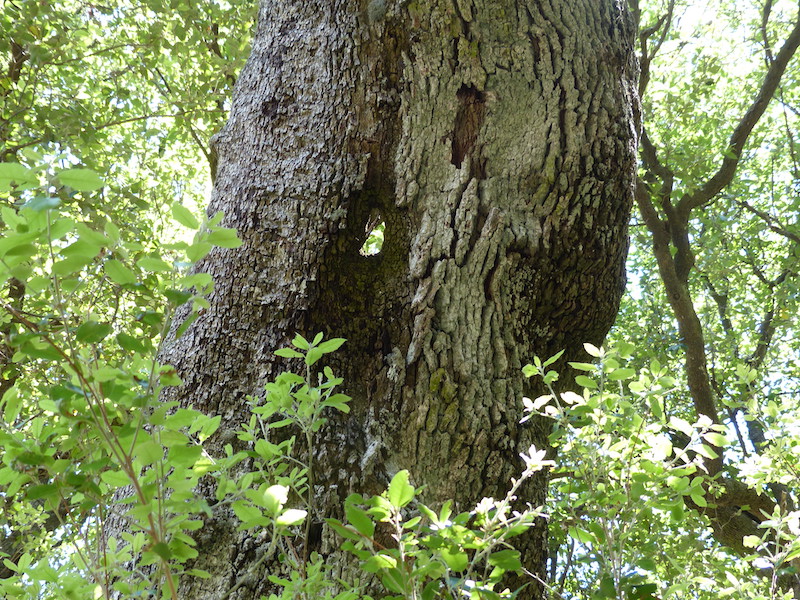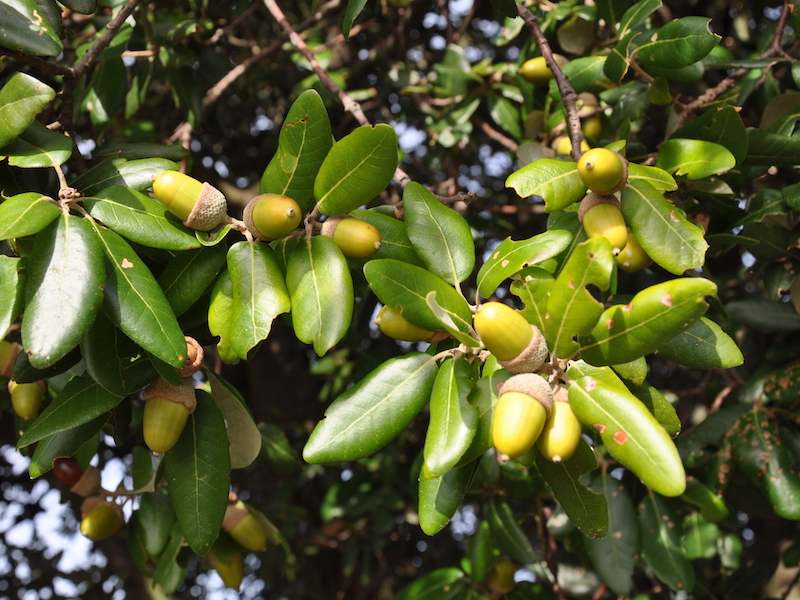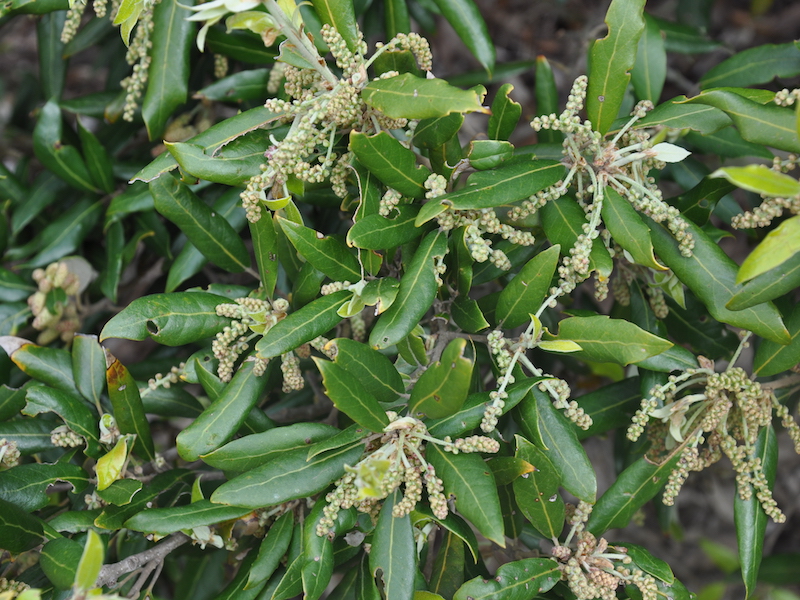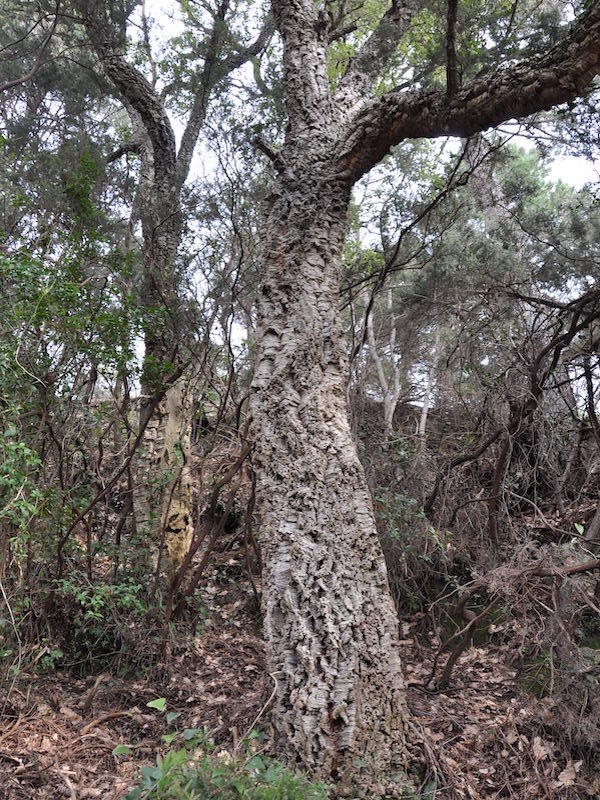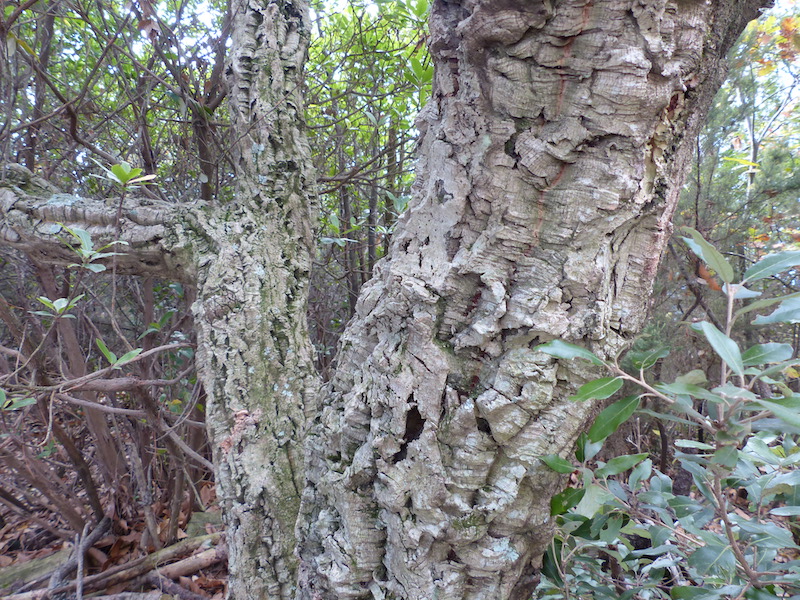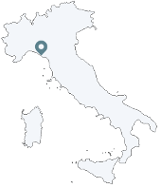At mid-height on the sea-facing slopes, out of reach of the sea's direct action and thus in a suitable position for tall trees, woods of evergreen oaks (Quercus ilex L.) grow, whose thick crowns shade and protect the soil.
These woods mostly developed in stages after agricultural practices were abandoned in the area: first spontaneous grass and shrubs spread on the naked, unfarmed soil, thus preparing it for the shrubs of the Mediterranean macchia to grow; these include the evergreen oak, which finally outgrows the others and forms the woods.
Less commonly, the original evergreen oak woods have survived from the start in areas that were uninteresting for agriculture and that were more forestry-oriented, as evergreen oaks give excellent firewood.
Predominantly evergreen oak woods may include minority populations of other species, such as downy oak (Quercus pubescens L.), hop-hornbeam (Ostrya carpinifolia L.), maritime pine (Pinus pinaster Aiton); in the Spezia territory of the National Park, between Sant'Antonio and Campiglia, evergreen oaks grow along cork oaks (Quercus suber L.), which are a rare species in Liguria and are therefore valuable from a scientific standpoint.
Little light manages to penetrate the evergreen woods, so that only shade-loving species can grow, like the new plants germinating from the fallen acorns of the evergreen oak, and many types of fungi; here, wild animals find shelter, food and relief from the heat: wild boars, badgers, foxes, roe deers, dormice and, among the birds, the acorn-loving jay.
The evergreen oak (Quercus ilex L.)
It is an evergreen tree in the family Fagaceae, widespread along the Mediterranean coasts. Its leaves are persistent, coriaceous, variably shaped, dark green and glossy on the upper surface, grey and felt-like on the lower. The crown is globe-shaped, thick and dark. The bark is smooth and grey in the young plants and becomes thicker and darker when ageing, cracking into polygon-shaped fissures. The fruit is an acorn, brown when ripe, edible and very sought-after by wild animals; acorns hang from a short peduncle and grow in bunches of 2 to 5. The evergreen oak propagates via seed, but it can also grow root sprouts. It is a long-living species, which can reach 1000 years of age and be up to 25 metres tall; the main trunk is easily wider that one metre, and it splits in thick branches shortly above the ground.
By the Sanctuaries of Madonna di Soviore in Monterosso and Madonna di Reggio in Vernazza there are 20-metre tall and 350-cm wide evergreen oaks that are included in the Italian List of Monumental Trees.
(See gallery)
The cork oak (Quercus suber L.)
The cork oak is an evergreen tree in the family Fagaceae, stemming from South-Western Europe and North-Western Africa and widespread in the whole of western Mediterranean on acid, sub-acid and decalcified soils, where it is used for the production of cork.
Its bark is distinctive: at first smooth and grey, it then becomes several centimetres thick, grooved and spongy, light-coloured outside and rosy inside. Thanks to its insulating and fire-resistant properties, and its capability of regrowing and standing repeated decortication, it is used to produce cork, of which Portugal is the first producer worldwide.
The leaves are persistent, coriaceous, ovate-lanceolate, bright green on the upper surface, grey and tomentose on the lower. This is a long-living species, which can be up to 20 metres tall and over one metre wide.
It can be admired at La Maddalena, in the municipality of Monterosso, and between Sant'Antonio and Campiglia, in the municipality of La Spezia.
The jay (Garrulus glandarius L.)
The jay is a passerine bird in the family Corvidae, a little over 30 cm long, widespread in the European woods and in large areas of the other continents. It is a robust bird, with strong bill and legs, blue eyes, pinkish brown body, white back and striped black and blue coverts; when excited it may raise its streaked, black and white crown.
It is a diurnal and solitary bird, with a harsh, rasping call, but very good at imitating other calls and sounds. It is omnivore, and therefore feeds on insects, small reptiles and mammals, seeds and fruits, but its favourite food are acorns, that make up over half of its diet: jays gather and bury them in the ground or in the bark of trees to eat them in the winter, thus contributing to the propagation of oaks at a remarkable distance from the plant of origin.
Silvia Olivari


